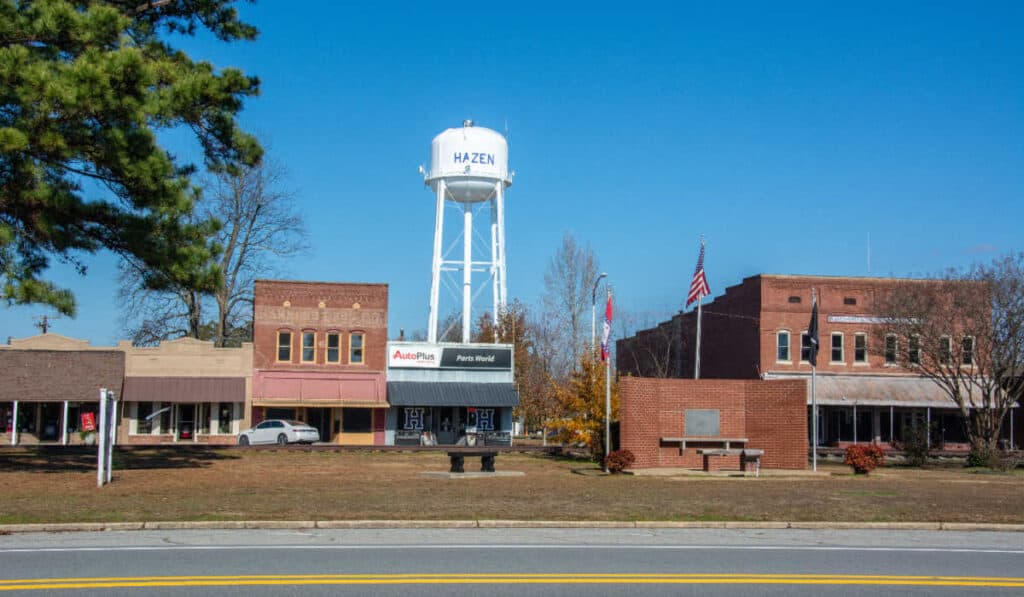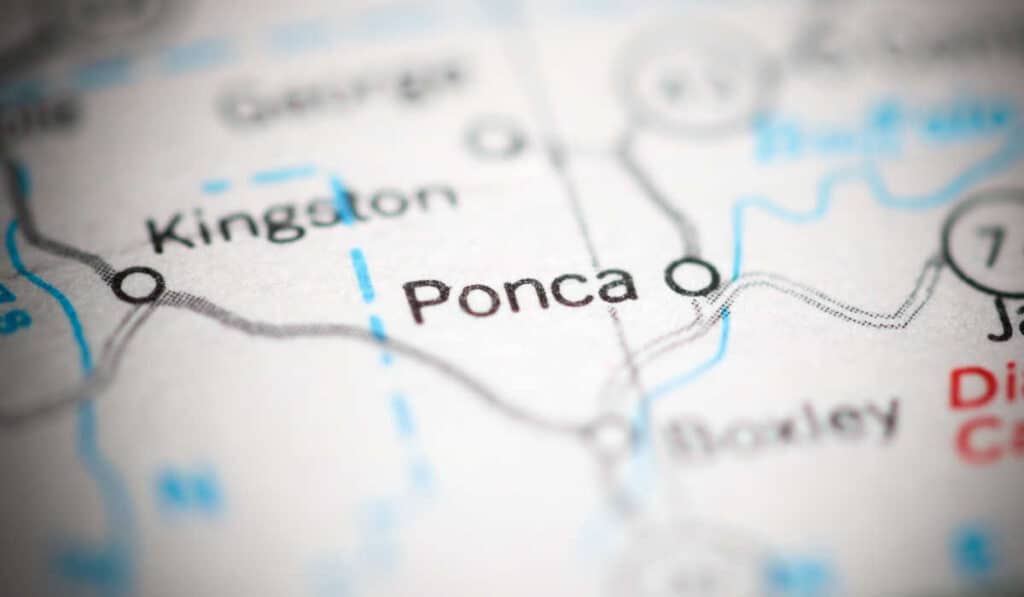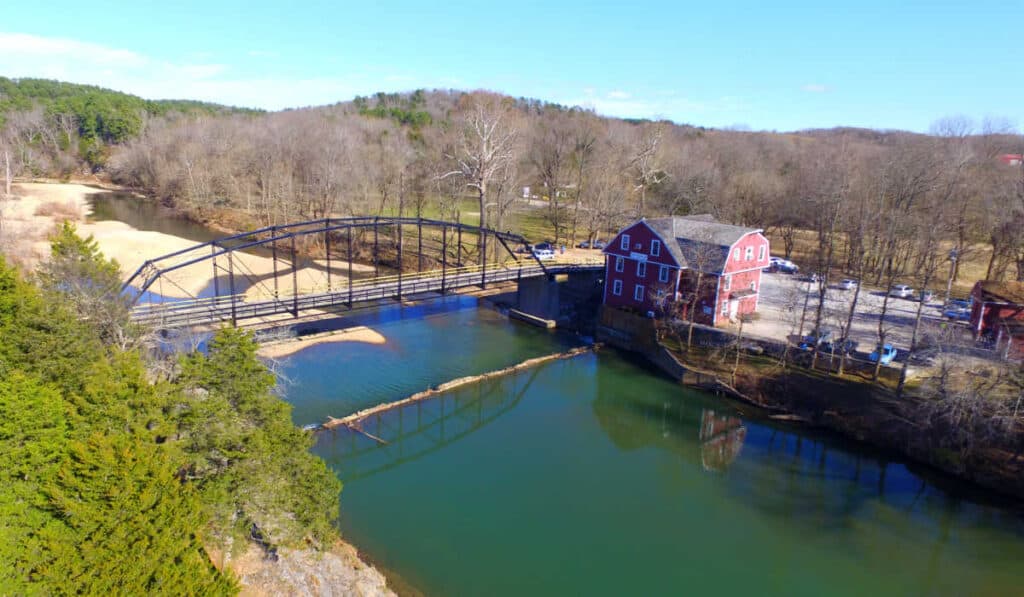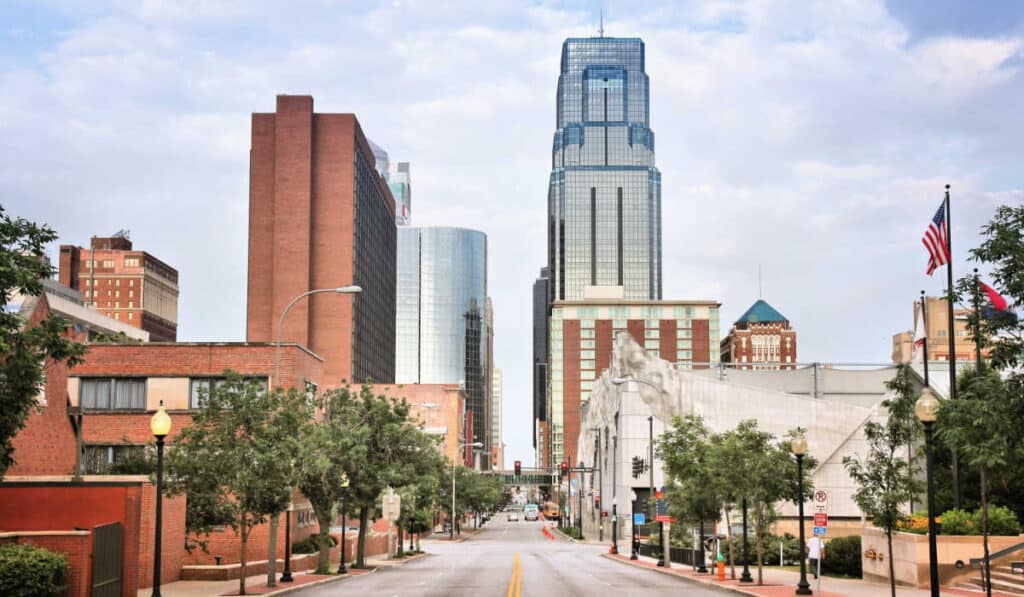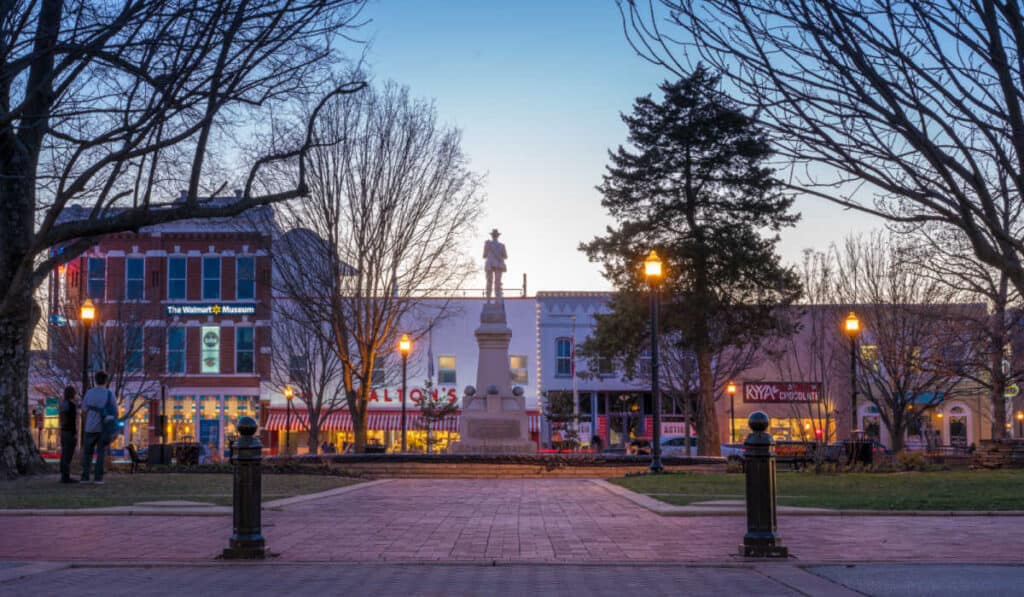Little Rock, the capital city of Arkansas, is a charming destination nestled along the Arkansas River, known for its rich history, cultural attractions, and stunning natural beauty. As the seat of Pulaski County, Little Rock lies within the foothills of the Ouachita Mountains in the central part of the state. The city’s intriguing name originates from a small rock formation on the south bank of the Arkansas River called “Little Rock” (La Petite Roche), which was a prominent landmark for early river traffic and a well-known river crossing.
This bustling capital city boasts numerous attractions that cater to a diverse range of interests. History buffs are drawn to the city’s William J. Clinton Presidential Library and Museum, the Little Rock Central High School National Historic Site, and the Old State House Museum. Nature enthusiasts can revel in the beauty of Pinnacle Mountain State Park, while those with a penchant for unique experiences may find the Esse Purse Museum particularly intriguing. For families, the Little Rock Zoo never fails to make a memorable day.
With attractions that appeal to people of all ages, Little Rock, Arkansas, is a gem in the heart of the Natural State that is brimming with experiences just waiting to be discovered. Whether you’re interested in history, art, or natural wonders, Little Rock has something to offer everyone making it a must-visit location.
History
Little Rock, the capital city of Arkansas, is known for its rich history and significant events. Located on the bank of the Arkansas River, the area where Little Rock now stands was originally inhabited by the Quapaw, Caddo, and Osage tribes, who settled near the river for its resources.
In 1722, French explorer Jean-Baptiste Bénard de la Harpe arrived in the region. He named the area “la petite roche,” or “the little rock,” after a notable stone outcropping on the riverbank. This formation served as a landmark for early travelers, marking the transition from the flat Mississippi Delta region to the Ouachita Mountain foothills.
The permanent settlement of Little Rock began in the spring of 1820, and the first building, a cabin or shanty, was built near the site of the stone landmark. By March 1820, a post office had been established in the area, and Little Rock began to grow as a community. In 1819, the Arkansas Territory was formed, and just a few years later in 1836, Arkansas became the 25th state of the United States, with Little Rock serving as its capital city.
Throughout its history, Little Rock has been a hub of significant political, social, and educational events. One key event that shaped the city’s history was the desegregation crisis in 1957, when nine African American students, known as the Little Rock Nine, were denied entry to Central High School. This event drew international attention and played a significant role in the ongoing fight for civil rights in the United States.
Today, Little Rock continues to be an important center for culture, commerce, and history in the state of Arkansas.
Civil Rights Movement
Little Rock, Arkansas, is notably known for its significant role in the Civil Rights Movement, particularly regarding the desegregation of public schools. Central to this history is Little Rock Central High School and the event involving the group called the Little Rock Nine. These nine African American students bravely challenged racial segregation in the face of adversity.
In 1957, the Little Rock Nine attempted to enter the newly desegregated Little Rock Central High School. However, Arkansas Governor Orval Faubus called in the Arkansas National Guard to prevent the students from entering the school. This act marked a pivotal moment in the Civil Rights Movement, as it brought nationwide attention to the struggles faced by African Americans in pursuit of desegregation and integration.
The Little Rock Nine were composed of Minnijean Brown, Elizabeth Eckford, Ernest Green, Thelma Mothershed, Gloria Ray, Jefferson Thomas, and three other students. Despite facing intense anger and violent threats, these students persevered in attending the previously all-white school. Their courage in the midst of the chaos represented a milestone in the fight against segregation, inspiring others to follow suit.
The conflict surrounding Little Rock Central High School and the Little Rock Nine came to be known as the desegregation crisis. This event fueled the nation’s commitment to dismantling racial segregation and promoting equal rights for all Americans. As such, Little Rock’s Civil Rights history remains an important reminder of the progress made and the continued efforts necessary to truly achieve integration and equality.
Government and City Landmarks
Little Rock, the capital city of Arkansas, is home to several important government landmarks that reflect its rich history and significance in the state. One of the key government landmarks is the Arkansas State Capitol, a neoclassical building completed in 1915. This imposing structure serves as the primary hub for various state functions and legislative activities.
In addition to the State Capitol, the Old State House Museum is another iconic landmark in Little Rock. It was once Arkansas’ first Capitol Building and now functions as the Arkansas History Museum. Built between 1833 and 1842, the Old State House is a National Historic Landmark that showcases Arkansas’s history, art, and culture.
Not far from Little Rock, North Little Rock also features interesting government landmarks worth mentioning. The North Little Rock City Hall, for instance, is the center of local government and houses various city departments, including the mayor’s office and city council chambers.
The city of Little Rock and North Little Rock are connected by several bridges that span across the Arkansas River, creating an iconic landscape that brings together both cities. Among the bridges, the Big Dam Bridge is a popular landmark built for pedestrian and bicycle traffic, providing picturesque views of the Arkansas River and waterfront areas.
To sum up, Little Rock, Arkansas, is home to several notable government and city landmarks, such as the Arkansas State Capitol, the Old State House Museum, and North Little Rock’s City Hall. These structures and sites not only highlight the city’s important role in Arkansas’s government and history but also create an unforgettable landscape that attracts locals and visitors alike.
Museums and Cultural Centers
Little Rock, Arkansas, is known for its rich arts and culture scene, with various notable museums and cultural centers dotting the city. The Arkansas Museum of Fine Arts (501 E 9th St) is a major attraction, showcasing a diverse collection of art, live theatre productions, and educational programs for art enthusiasts.
Another significant site is the Old State House Museum, housed in the oldest surviving state capitol building west of the Mississippi River. This museum preserves and interprets the history of Arkansas, featuring exhibits on politics, culture, and architecture. The Museum of Discovery (341) offers interactive science exhibits, ensuring fun and learning for all ages.
In the heart of downtown Little Rock, the Historic Arkansas Museum provides a glimpse into the city’s early history through restored buildings, galleries, and living history demonstrations. Nearby, the Presidential Library chronicles the life and political career of former President Bill Clinton, offering a comprehensive view of American history during his tenure in office.
Two unique museums in Little Rock include the Esse Purse Museum and the Heifer International headquarters. The Esse Purse Museum (1510 S Main St) is one of only three purse museums in the world, exhibiting the evolution and artistry of women’s handbags throughout history. Heifer International, a global nonprofit organization, impresses visitors with its interactive exhibits promoting sustainable solutions to global hunger and poverty.
The Mosaic Templars Cultural Center celebrates African American history and culture in Arkansas through exhibits, events, and educational programs. This center is located in the historic Quapaw Quarter, known for its beautifully preserved 19th and 20th-century architecture.
In summary, Little Rock is home to a variety of museums and cultural centers, reflecting the city’s diverse history and thriving arts scene. Visitors to the city can enjoy engaging educational experiences, unique collections, and beautiful architectural tours, making Little Rock a must-visit destination for culture enthusiasts.
Outdoor Activities and Attractions
Little Rock, Arkansas is known for its diverse outdoor activities and attractions that cater to nature enthusiasts and families alike. The city is nestled between the Ouachita and Ozark mountains, providing breathtaking scenery and ample opportunities for outdoor adventures.
The Arkansas River flows through Little Rock, offering scenic riverside trails and water activities. One of the most iconic landmarks along the river is the Big Dam Bridge. This impressive structure is the largest pedestrian and bicycle bridge in North America, with over 14 miles of beautiful riverside trails for walking, cycling, jogging, and hiking.
Pinnacle Mountain State Park is another popular outdoor destination in the area. This stunning park, located just outside Little Rock, features the Ouachita Mountains as a beautiful backdrop for the variety of recreational activities available. Visitors can hike the park’s numerous trails, enjoy picnics, and even participate in educational programs and events. Pinnacle Mountain State Park is an excellent destination to experience the beauty of the Ouachita Mountains.
For animal lovers, the Little Rock Zoo is a must-visit destination. The zoo houses over 700 animals from around the world and offers educational programs and interactive exhibits for guests to learn more about the diverse species and their habitats.
Little Rock is also home to the Little Rock Central High School National Historic Site, a significant location in the civil rights movement. The site offers guided tours for visitors to learn about the events that took place here, and is an important part of the city’s rich history.
Outdoor enthusiasts will find no shortage of activities in Little Rock, Arkansas. With stunning natural landscapes, an array of attractions, and a deep connection to history, the city offers something for everyone to enjoy while exploring the great outdoors.
Food and Culinary Scene
Little Rock, Arkansas offers a diverse and thriving food scene, showcasing a unique blend of southern comfort food and local, innovative cuisine. The city is known for its cheese dip, which originated here and has become a popular snack across the state. Many local restaurants serve a variety of cheese dips, incorporating different types of cheeses and seasonings for a delightful culinary experience.
Rice also holds a special place in Arkansas’ culinary scene, as the state is a leading producer of rice in the United States. As a result, various rice-based dishes can be found at eateries throughout Little Rock, ranging from classic southern-style rice dishes to more contemporary options.
One of the staples in the Little Rock food landscape is Finkbeiner Meat Packing Co. Established in 1991, this family-owned business specializes in producing high-quality meats, including their famous cheese dogs. These delicious sausages filled with cheese are a crowd favorite and can be found at local shops and restaurants.
When it comes to special occasions, Little Rock has a strong connection to traditional Thanksgiving celebrations. Many local residents and visitors alike enjoy a sumptuous Thanksgiving meal at various dining establishments, where they can indulge in turkey, dressing, and other classic dishes – showcasing the deep culinary roots of the area.
Local flavors and foodie experiences in Little Rock include:
- Kemuri, a fine-dining Japanese restaurant known for its sushi rolls and sashimi
- The Purple Cow, a nostalgic 1950s-style diner with multiple locations throughout Central Arkansas
- Best Impressions, offering salads, pastas, and classic mains, including the indulgent red velvet cake for dessert
Little Rock’s food and culinary scene reflects its rich history and the passion of its residents for great food. The city has something for everyone, from traditional southern-style dishes to innovative international cuisine, while always staying true to its Arkansas roots.
Business and Economy
Little Rock, the capital of Arkansas, is known as the center of economic activity in the state. With a population of over 202,000 residents, the city hosts major employers from various industries such as healthcare, aerospace, banking and finance, technology, advanced manufacturing, government, education, and agriculture.
As the largest city in a primarily rural and agricultural state, Little Rock’s economy has traditionally relied on cotton, rice, soybeans, and other crops as sources of income. In recent years, however, the city has diversified its economic base and experienced growth in other sectors.
Dillard’s, a nationwide department store chain, is headquartered in Little Rock, contributing to job opportunities and local economic vitality. Alongside the retail industry, Stephens Inc., a prominent, privately-held financial services firm, is also based in Little Rock. The presence of these companies showcases the city’s strength in the business and financial sectors.
The City of Little Rock plays a crucial role in promoting economic development and attracting new businesses to the area. The local government helps establish a business-friendly environment, offering incentives and assistance to companies interested in relocating or expanding in the city.
Moreover, as the state capital, Little Rock is home to the Arkansas government’s primary offices, making the city a hub for government careers and operations. This centralized location enables easy access and collaboration between the public and private sectors.
In conclusion, Little Rock, Arkansas, is known for its diverse and growing economy, driven by both traditional and modern industries. The city’s government, along with key players like Dillard’s and Stephens Inc., contribute significantly to the area’s economic success and make Little Rock an attractive destination for businesses and professionals alike.
Sports and Recreation
Little Rock, the capital city of Arkansas, offers a variety of sports and recreational activities for residents and visitors alike. The city is known for its commitment to maintaining green spaces, with over 63 parks throughout Little Rock. These parks provide opportunities for picnicking, fishing, and enjoying playgrounds and splash pads for kids.
For sports enthusiasts, Little Rock is home to the Interstate Park Sports Complex, which serves as the main facility for youth athletics in the city. The complex offers various sports programs, including baseball, basketball, cheerleading, football, soccer, softball, volleyball, and blastball. These programs cater to children as young as three years old and up, with registration fees ranging from $10 to $25 per child.
Central Arkansas is passionate about college sports, with the University of Arkansas Razorbacks being the most popular team in the region. The Razorbacks compete in the NCAA Division I Southeastern Conference (SEC), and their sporting events, especially football and basketball games, draw a large number of fans from Little Rock and the surrounding areas.
In addition to parks and organized sports, Little Rock is also an ideal location for outdoor enthusiasts who enjoy activities such as hiking, biking, and birdwatching. The city’s extensive trail system includes the Arkansas River Trail, which stretches for 17 miles along the scenic Arkansas River and offers breathtaking views of downtown Little Rock and the surrounding natural landscape.
Whether you’re a dedicated sports fan or simply love to enjoy the great outdoors, Little Rock, Arkansas has something to offer for everyone when it comes to sports and recreation.
Arts and Entertainment
Little Rock, Arkansas, is a vibrant hub for arts and entertainment, hosting a diverse range of cultural experiences. The city is home to numerous theaters, art galleries, and music venues that cater to different tastes and preferences.
One of the city’s prominent performing arts venues is the Arkansas Repertory Theatre, a professional theatre company that produces a variety of plays, musicals, and live performances. Additionally, the Robinson Center serves as a multipurpose facility for concerts, operas, and ballets, enhancing the city’s performing arts offerings.
Little Rock’s bustling art scene includes the Arkansas Arts Center located in the historic MacArthur Park. The center features an art museum housing a vast collection of contemporary and classic works, as well as an active schedule of traveling exhibitions, art classes, and workshops.
Music enthusiasts can explore a wide range of genres in Little Rock. Live music venues such as Revolution Music Room and Stickyz Rock’n’Roll Chicken Shack host local and touring bands, providing a dynamic atmosphere for rock, blues, and alternative music lovers.
A highlight of Little Rock’s cultural landscape is the William J. Clinton Presidential Library. This modern architectural marvel not only showcases the life and work of 42nd President Bill Clinton but also serves as a venue for temporary exhibits, educational programs, and various events.
In conclusion, Little Rock offers a rich selection of arts and entertainment opportunities, ensuring that residents and visitors alike can indulge in the city’s creative and cultural events.
Miscellaneous
Little Rock, Arkansas, is home to a variety of unique attractions and establishments. One such attraction is the Esse Purse Museum, which celebrates the history of American women through the art, science, and history of handbags. The museum showcases a wide range of bags from different time periods, offering a glimpse into the daily lives of women throughout the decades.
In the realm of medical history, the Arkansas Medical Society hosted a public human dissection in 1889, displaying an interest in the understanding and advancement of human anatomy and medical knowledge. This was a significant event in the history of Little Rock and its continued development as a city focused on education and progress.
The term “Arkopolis” refers to a nickname for Little Rock coined in the 1850s. This nickname was a combination of “Arkansas” and “metropolis” and was meant to signify the city’s growing importance as the state’s capital and its potential as an economic powerhouse.
Little Rock has made notable contributions to the entertainment industry as well. The popular television series “Designing Women” was set in Little Rock, bringing national attention to the city. Moreover, local venues host a variety of theater, music, and art events, contributing to the vibrant cultural scene.
The historic Peabody Hotel in Little Rock was known for its daily Duck March, a unique event where ducks would parade through the hotel lobby and swim in the hotel’s ornate fountain. This quirky tradition garnered attention and added an element of charm to the city.
Additionally, Little Rock’s State Capitol building bears a striking resemblance to the United States Capitol and has been used as a stand-in for Hollywood films. This architectural similarity has contributed to the city’s fame and recognition on the national stage.


